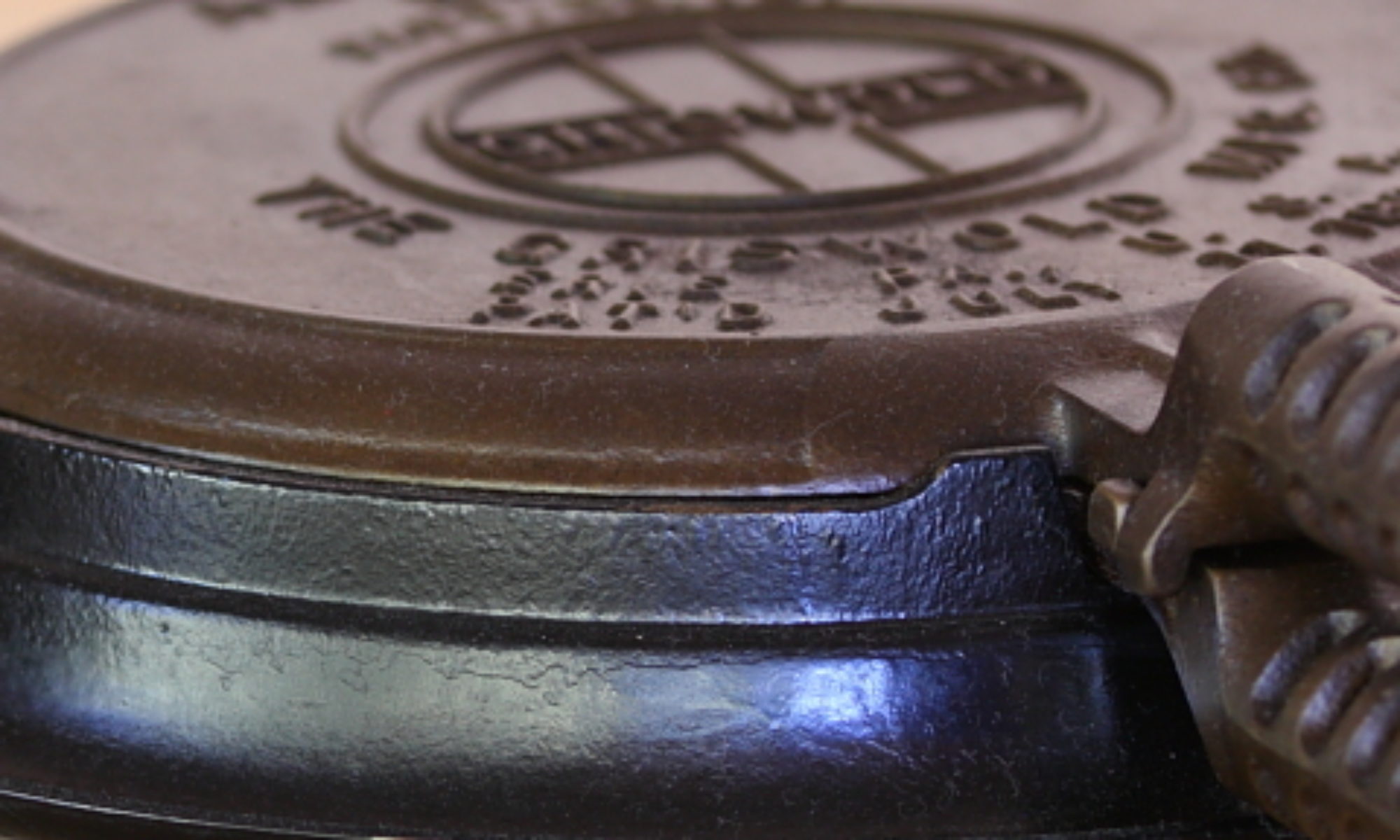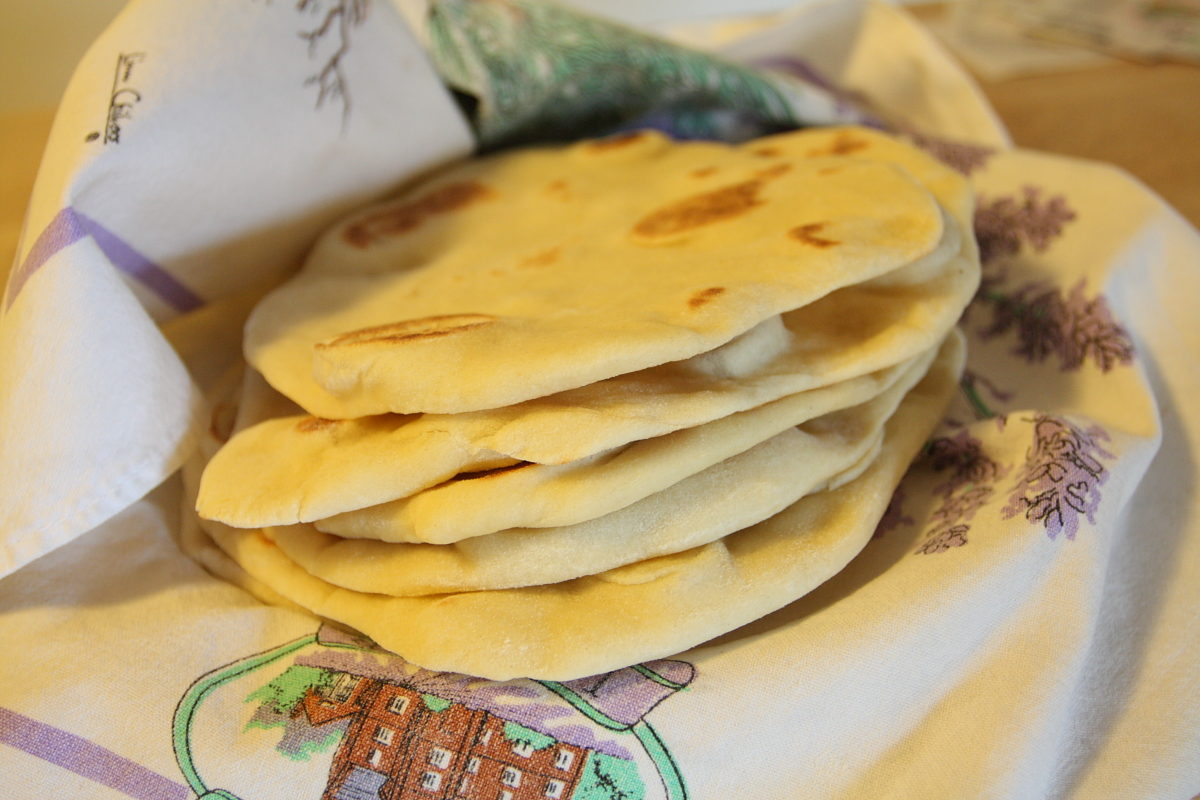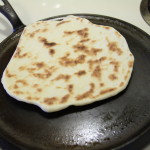
We had had several moderately rich dinners in a row and were hankering for something a bit more humble and hearty. For us, one dish in particular always fits the bill: beans and rice. We think that we could eat beans and rice nearly every day and not get tired of it. Of course, with beans and rice, it’s nice to have a bread product to sop up broth and wipe out the bowl. So, what kind of bread? While we have a number of choices in the freezer (bagels, pita, boules), we wanted something fresh and hot. Being mid-afternoon, it must be fast, which leans towards some sort of flat bread. Tortillas are easy and fast; nah, we just had them. What about chapatis? Nah, too close to tortillas. Oo, oo, ah, ah, how about lavash?
We’ve never made lavash before, but we figured, hey, it’s a flat bread, made for thousands of years, under circumstances that range from the most primitive to the most elaborate. Surely, we can handle a couple of lavash.(no, that’s not foreshadowing to a disaster; as expected, lavash is easy). The next question was, how do you make lavash? For this, we turned to Bernard Clayton’s New Complete Book of Breads. Being complete, by definition it must have a recipe for lavash. It does, and here it is, scaled back to make to make 6 small lavash.
Lavash
Ingredients
- 2 cups [250 g] all-purpose flour
- 1 tsp [6 g] salt
- 1 tsp [4 g] instant dried yeast
- 3/4 cup [180 g] hot water 120-130°F
- 2 tsp [9 g] olive oil plus more for oiling
Instructions
- In medium bowl, combine 1 cup flour, salt, and dried yeast, until well mixed.
- Add hot water and stir until you have a uniform batter. Continue adding flour, 1/4 cup at a time, stirring until the dough comes together.
- Turn out onto a floured surface and knead for 8 minutes.
- Place in oiled bowl, cover with plastic wrap, and let rise until doubled, about 40 minutes.
- Divide into 6 pieces, roll each into a disk about 8 inches in diameter. Flour and stack on a clean towel to rest for 10 minutes.
- Heat griddle on medium-low while lavash rest. Wipe griddle with a light coating of oil and grill lavash for about 2 minutes on a side, oiling griddle before grilling the next.
Ingredient discussion:
As with most breads, the ingredients are simple. Flour, water, salt, yeast, and a bit of oil. Note that the water is 120-130°F, which is quite warm to the touch. You can use water this hot because it goes into the flour/yeast combination, resulting in the proper temperature mixture for the yeast to grow. If you err in temperature, err on the cool enough side; your yeast will take longer to rise, but it’ll still turn out. Whereas, if your water is too hot, you’ll kill the yeast and the dough will never rise. Note that we include measurements by weight. This really helps when you want a consistent bread product as you make it time and time again. We really wanted to see what the hydration level was (percentage of water relative to flour), so we could use starter for our lavash next time (180/250*100% = 72%).
Procedure in detail:
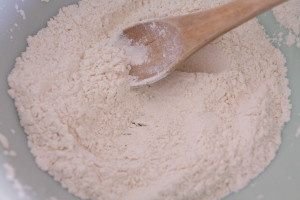
Mix flour, salt, and yeast. Measure out 1 cup of flour, the salt, and the yeast into a bowl. Stir the ingredients around to mix together. You want the yeast spread around so the flour will act as a heat sink and reduce the water temperature to make it perfect, as with baby bear’s soup: just right.
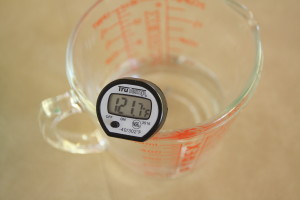
Heat water. We like to heat tap water in the microwave. You could let the water run from the tap until you get the right temperature, but why? Just measure out cold tap water, and check the temperature. If too cold, pop in the microwave for 10 to 15 seconds, and check again. Repeat until the temperature is just right.
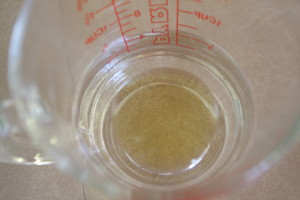
Add oil. Once the water is the right temperature, add the water to the oil. Why? We really don’t know why you just can’t put it in the flour. But it does look kind of nice floating as a light green slick on the surface.
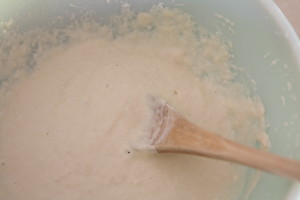
Pour water and oil into flour. Add the liquid all at once and stir well. It’ll be really easy because there is more liquid than flour, making it kind of like pancake batter. Keep stirring and mixing until the batter is smooth.
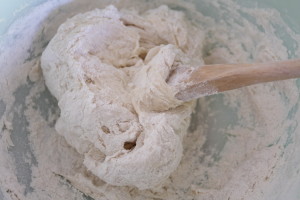
Add flour. Add the remaining flour, 1/4 cup at a time, stirring and mixing between additions. When you add the last bit of flour, the dough will have come together in a ball.
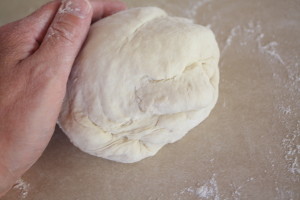
Knead. This is the part that puts most people off of scratchin’ up your own bread: kneading it. This dough is really easy, though. It’s a small amount and it’s soft, so you’ll have no trouble kneading for about 8 to 10 minutes. Feel free to take a 5 minute break halfway through. It won’t hurt the bread one little bit.
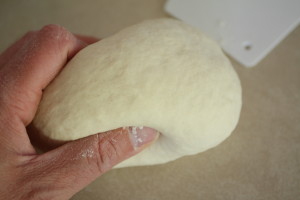
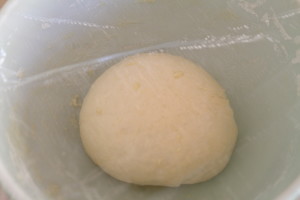
Rise. Place the dough in an oiled bowl. We like to pour a bit of olive oil in the bowl we used for mixing (no need to clean as long as you got out most the dough). Take the ball of dough and swirl the oil around, using the dough to “paint” the sides of the bowl with oil. Then, a quick flip of the wrist to flip the dough over (oil side up) in the bottom of the bowl. Cover with plastic wrap and let rise until doubled, about 40 minutes.
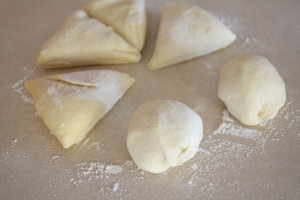
Divide. Place the dough on a floured surface and cut into 6 roughly equal pieces. Form each into a ball. Press each ball flat with your hands; then, using a rolling pin on a floured surface, roll each ball out to a circle about 8- to 9-inches in diameter.
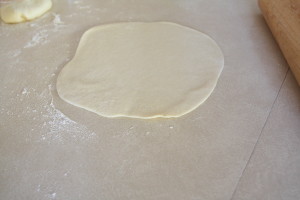
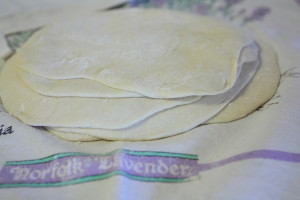
Flour and stack. As you roll the dough out, dust each lavash with flour, and stack on a clean dish towel. Cover with the towel and let rest 10 minutes.
Heat griddle. Place a griddle on a medium-low burner and heat for about 10 minutes. Think about this as if you’re making pancakes: you want the griddle completely heated.
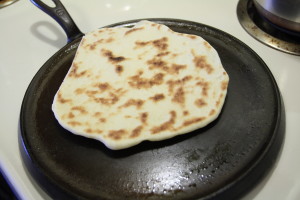
Oil and bake. For each lavash, lightly oil or grease the griddle (we just smear some grease around with a paper towel) and set a lavash to baking. Or griddling. Whatever the term might be. Let the lavash griddle for about 2 minutes, or until the bottom is nicely browned in spots, but still soft, and flip. Griddle the same length of time on the other side. Wrap in a towel to keep warm, and repeat with the remaining lavash.
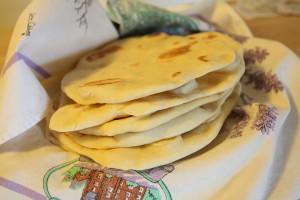
Serve. Serve these immediately while still fresh and hot. You’ll love them.
While we had never made lavash specifically before, we’ve made enough bread that we knew it would be easy, as almost all breads are pretty much the same, except for the percentage of water to flour in them (the hydration). These turned out similar to naan in texture and flavor, which really isn’t too surprising, since we griddle them in much the same way. Regardless of what they may remind you of, these lavash were a great accompaniment to our dinner. Much like baby bear’s porridge, we couldn’t stop until they were all gone. Five stars, because they are a super easy bread that tastes great! Make some tonight!
